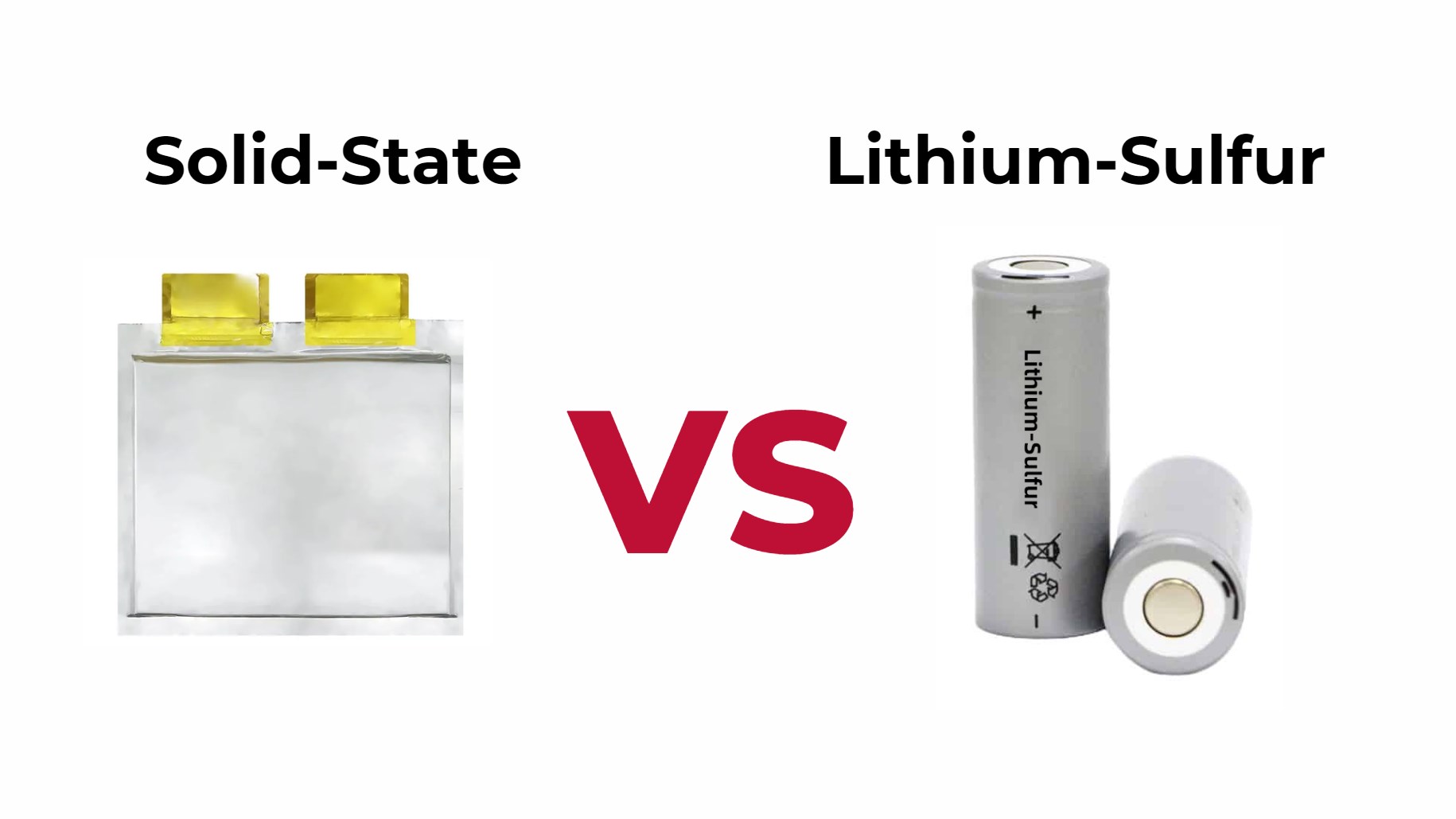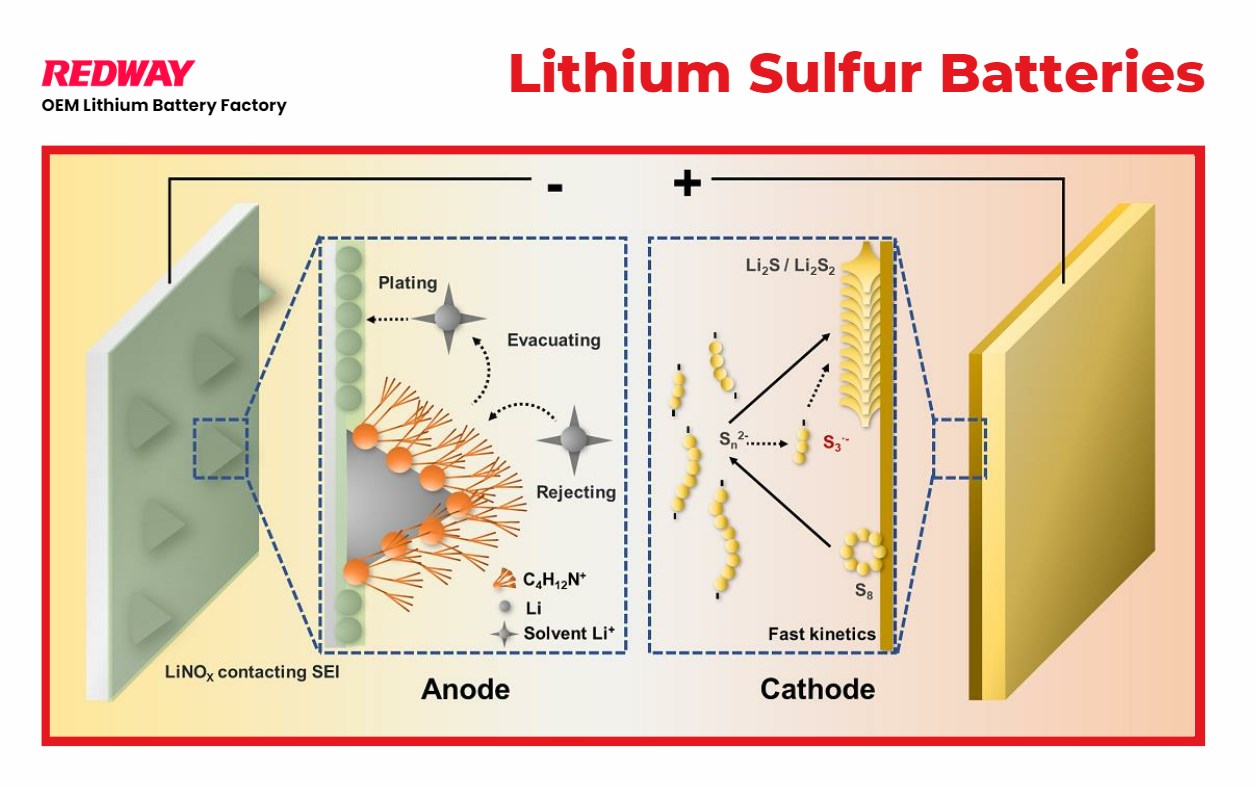As the quest for advanced energy storage solutions continues, solid-state, lithium-sulfur, and sodium-ion batteries each offer unique benefits and face distinct challenges. This article provides a comparative analysis of these three battery technologies, focusing on their advantages, challenges, and potential applications.
Solid-state batteries outperform both lithium-sulfur and sodium-ion batteries in energy density and safety due to their solid electrolytes. While sodium-ion batteries are cheaper thanks to abundant materials, solid-state technology offers longer lifecycles but may currently be more expensive to produce. Each technology has unique advantages depending on application needs.
Solid-State Batteries
Overview: Solid-state batteries replace the liquid or gel electrolytes used in traditional lithium-ion batteries with solid electrolytes. This design aims to enhance safety and increase energy density.
Advantages:
- Safety: Solid-state batteries are significantly safer due to their resistance to thermal runaway and fire risks. The solid electrolyte is stable and less likely to cause overheating or combustion.
- Higher Energy Density: They can potentially achieve higher energy densities, allowing for more power storage in a smaller and lighter package. This feature is advantageous for applications requiring compact, high-capacity energy sources.
- Faster Charging: Some prototypes can charge up to 80% in as little as 15 minutes, offering a rapid recharge capability compared to traditional batteries.
- Longer Lifespan: Solid-state batteries typically offer longer cycle lives, enduring more charge-discharge cycles before performance degradation.
Challenges:
- Manufacturing Complexity: The production of solid-state batteries involves complex and costly manufacturing processes. Achieving precise fabrication techniques is essential but challenging.
- Limited Scalability: Scaling up production to meet growing market demand remains a significant hurdle. Current production capabilities are limited, which impacts widespread adoption.
Lithium-Sulfur Batteries
Overview: Lithium-sulfur batteries utilize lithium as the anode and sulfur as the cathode. This combination offers a promising alternative to conventional lithium-ion technologies.
Advantages:
- High Energy Density: Lithium-sulfur batteries can theoretically achieve much higher energy densities (up to 500 Wh/kg) compared to lithium-ion batteries. This high density makes them suitable for applications requiring lightweight and high-capacity energy storage.
- Cost-Effectiveness: Sulfur is abundant and inexpensive compared to other materials used in batteries, such as cobalt and nickel. This could lead to lower overall production costs.
Challenges:
- Cycle Life: One major drawback is their relatively short cycle life. The dissolution of polysulfides in the electrolyte can lead to capacity fading over time.
- Conductivity Issues: Sulfur has low electrical conductivity, which can hinder battery performance unless addressed through advanced material engineering and optimization.
Sodium-Ion Batteries
Overview: Sodium-ion batteries replace lithium with sodium, leveraging similar chemistry but benefiting from the greater abundance of sodium resources.
Advantages:
- Abundance and Cost: Sodium is much more abundant than lithium, potentially making sodium-ion batteries cheaper and more sustainable. This abundance can lead to lower material costs and reduced environmental impact.
- Safety: Sodium-ion batteries are non-flammable and less prone to thermal runaway compared to lithium-ion batteries, enhancing their safety profile.
- Compatibility with Existing Infrastructure: Sodium-ion batteries share similar chemistry with lithium-ion batteries, allowing easier adaptation of existing manufacturing processes and infrastructure.
Challenges:
- Lower Energy Density: Sodium-ion batteries generally have lower energy densities compared to lithium-ion and solid-state batteries. This limitation can affect their performance in high-energy-density applications.
- Performance Limitations: The larger size of sodium ions compared to lithium ions can impact the battery’s overall energy storage capacity and efficiency, posing challenges for achieving high performance.
Conclusion
Each battery technology presents distinct advantages and challenges. Solid-state batteries offer superior safety and energy density but face issues related to manufacturing complexity and scalability. Lithium-sulfur batteries promise high energy densities but struggle with cycle life and conductivity. Sodium-ion batteries provide a cost-effective and safer alternative but currently lag in energy density compared to their lithium counterparts. Advances in materials science and manufacturing techniques will be crucial in determining the role of each technology in the future of energy storage.




